As part of Filipino American History Month, I embarked on a book tour in Seattle and Yakima Valley. Here is Part 2 of my chronicles of my time there.

While in Seattle, I stayed with my good friends, John and Kris. My husband, David, and John have known each other since pre-school. John was one of our groomsmen, and he is also the godfather of our son, Jacob. Friday morning, October 21st, John dropped me off at the Eastern Cafe in the International District, where I would later meet up with Marissa Aroy and our tour host Maria Batayola. a few doors down from the Eastern Cafe was the Eastern Hotel, which has a small Carlos Bulosan exhibit. It’s no longer a hotel, but apartments. I was able to get in and take pictures when one of the residents was leaving the building.
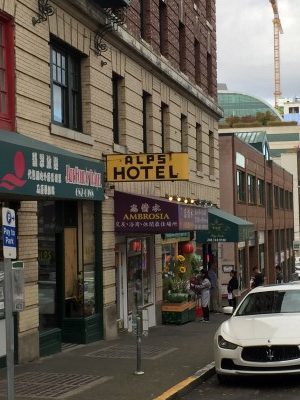
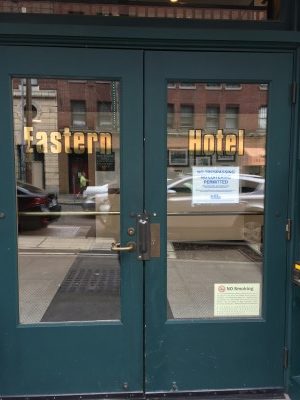




Marissa Aroy and I met up at the Luke Wing Museum of the Asian Pacific American Experience (719 S. King Street, 206.623.5124) in the International District, upon recommendation by and as guests of Maria Batalyola, with Pinoy Words Expressed Kultura Arts (PWEKA) and the Filipino American National Historical Society (FANHS) National Office, who were also some of our sponsors for the trip.




I’m grateful that such a museum exists. It’s a beautiful building and space, but more importantly it celebrates so many underrepresented and underappreciated ethnic groups who made lasting and continuing contributions to American history and culture. The Wing is “dedicated to immersing you in uniquely American stories of survival, success, conflict, compassion and hope. Through our guided tours and ongoing exhibitions, you can experience real life stories of the Asian Pacific American community.” An exhibit on Bruce Lee and a sobering and harrowing history of Cambodia’s “killing fields” and emigration from the country are currently being shown.
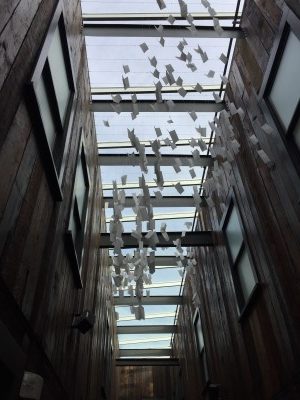
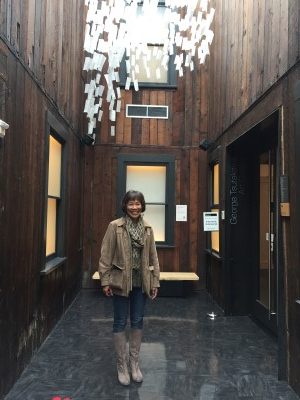


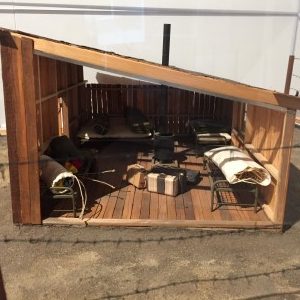
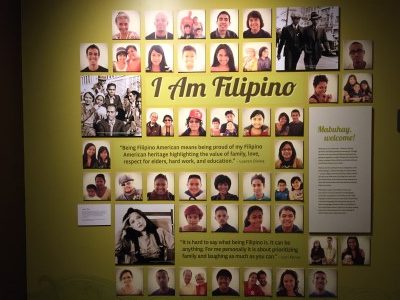

In the afternoon, Maria gave us a mini tour of historic sites in the International District. Maria was instrumental in the creation of the Filipino American Historical kiosk, “Honoring Filipino Americans in Chinatown International District, 1911-2010,” at the corner of S. Weller Street and 6th Avenue South. The kiosk will be formally dedicated in early November.
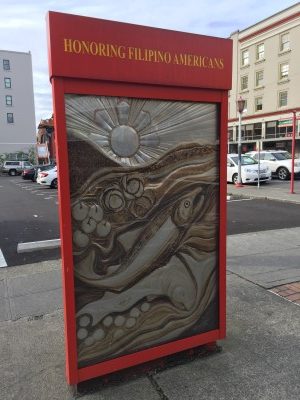


Later, we crossed the José Rizal Bridge, which “carries 12th Avenue South over South Dearborn Street and Interstate 90 in Seattle, connecting the International District to Beacon Hill.” One of the first permanent steel bridges in the City, the beautiful verdis green bridge was originally called the 12th Avenue South Bridge or the Dearborn Street Bridge before it was renamed in 1974 in honor of the Filipino patriot and national hero José Rizal. The bridge was listed on the National Register of Historic Places in 1982, however, under its original name. Dr. José Rizal Park, on the west side of Beacon Hill boasts a view of south downtown, Elliott Bay, Safeco Park – home of the Seattle Mariners MLB team – and the Seattle Seahawks’ CenturyLink Field. The 9.6-acre parcel of land was purchased by the Parks Department in 1971 and dedicated in 1979.
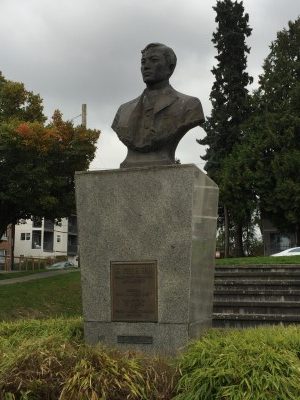

Maria also gave us a tour of the historic Panama Hotel, located in the International District. Designed by Japanese-American architect Sabro Ozasa and built in 1910, the Panama Hotel, a National Historic Landmark and National Treasure, housed a Japanese bath house, businesses, restaurants, and sleeping quarters for residents and visitors. Jan Johnson, who is the third owner of the hotel, restored the building to its condition before the Japanese in Seattle were evacuated. From what I understand, a number of Japanese American families stored their belongings in the basement of the Panama Hotel, with the hope of returning home, which many did not. Johnson closed off the basement that holds the belongings of the Japanese families to the public, and has installed a glass panel in the floorboards for visitors to view the artifacts from above. It’s quite moving.


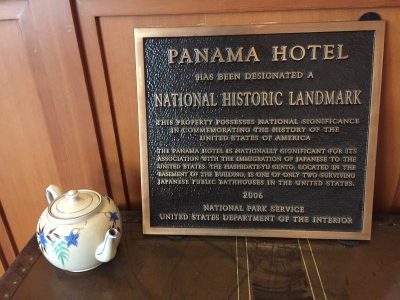







We made my first trip to the FANHS National Office (810 18th Avenue, #100, 206.322.0204), located within Lake Washington Girls Middle School. Although I saw Dorothy Cordova, Executive Director and Co-founder, with her late husband, of the Filipino American National Historical Society, at the 2016 FANHS Conference in New York City, this meeting represented my first introduction to “Auntie” Dorothy. I presented my novel to Auntie Dorothy as a gift to the FANHS Library.
Auntie Dorothy and me with my novel (photo courtesy of Maria Batayola).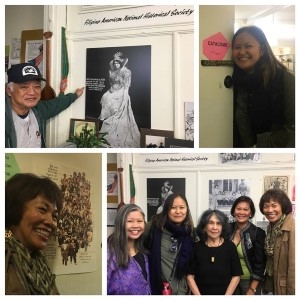

Marissa and I were treated to a visit to the FANHS archives, also known as the “catacombs,” where specially built shelves house hundreds of boxes of files on Filipino Americans. While Marissa looked through her file, I doubted that I had a file on me. To my surprise, I found two files – under Patty Enrado and Patricia Enrado – with correspondences that I had written to FANHS in 2005-2006, among them requesting contact information for a project on the Filipino Manilamen, which I ended up abandoning. I also sent a link to my short story, “We Are Thinking of You,” which had won an award in 2002 from Serpentine e-zine, and a journal that had published one of my other short stories. I didn’t save the online short story as a pdf, which was a shame because at some point this year the site was taken down and the link broken, forever erasing the existence of the story as is (I had various revisions of the story but no final Word version that matched the printed version). I was ecstatic, therefore, to take pictures of the printed story, and now I’ll have to figure out a way to get it up on my author website.
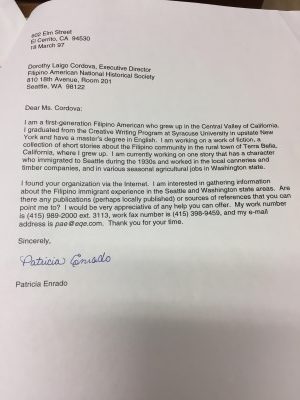


Originally, Maria was going to treat the three of us to dinner at Kusina Filipina (3201 Beacon Avenue S., 206.322.9433), but the place closed just as we walked up. The silver lining, however, was choosing Bar del Corso (3057 Beacon Avenue S., 206.395.2069, www.bardelcorso.com), a pizzeria, restaurant on Beacon Hill, as our backup destination a block away. Maria let us know that the wife who owns the restaurant with her husband, Jeff Corso, who is chef and general manager, is Filipino. Auntie Dorothy pointed out that a framed Filipino family photograph hangs in a hallway in the restaurant. Gina Tolentino Corso, the marketing and creative manager, is a freelance graphic designer, a painter and illustrator, and “lover of good food.” Her artwork – big, bold, and colorful paintings – hangs on the walls of the restaurant. Maria had announced to our waiter Auntie Dorothy’s presence and her title. So it should not have come as a surprise that Gina came to our table and said, “You must be the table of Filipino American women.” She was a delight to meet. When told of my book, she expressed interest in reading it. And although I didn’t ask where she was originally from, she attended UC Davis. Ah, the Aggie connection again in the Pacific Northwest!

I have to talk about the food because it was phenomenal – simply and deceptively prepared but complex and flavorful in taste. We ordered two salads, one of which had bits of crunchy savory crackers. We also ordered Polpettine (house-made meatballs in tomato sauce), Vongole Alla Marinara (Manila clams, garlic, controne pepper, cherry tomatoes, white wine, extra virgin olive oil, and parsley), Grilled Octopus (with corona beans, lacinato kale, spicy ‘Nduja salame, and extra virgin olive oil), and a pizza – Funghi, with crimini mushrooms, house-made sausage, cherry tomatoes, pecorino, and fontina. Family-style serving enabled us to sample everything. We ate everything and were happily sated. The next time I’m in Seattle, I’m returning to Bar del Corso.
Friday evening, as part of Celebrating 2016 Filipino American History Month, Marissa screened her film and I read a short excerpt at the Centilia Cultural Center at Plaza Roberto Maestas (1660 S. Roberto Maestas Festival Street, Seattle). The center recently opened after restoration of an old school house and the building of affordable housing and community-use buildings. What a beautiful project El Centro de la Raza took on! El Centro de la Raza, “the Center for People of All Races,” is “a voice and a hub for the Latino community” as they “advocate on behalf of” its “people and work to achieve social justice.” The evening’s theme reflected the mission of the nonprofit. Maria and Estela Ortega, executive director of El Centro de la Raza, welcomed the audience. Estela related that she had worked in the fields in Texas and was active in the United Farm Workers union but never knew that the Filipino American farm workers initiated the Great Delano Grape Strike of 1965 and were instrumental in the formation of the UFW. One of the goals of the evening of reading and screening was to highlight Filipino-American contributions to the farm labor movement, strengthen ties among Filipino and Latino workers, and honor Larry Itliong’s Northwest labor leadership and contribution with the local IBU salmon cannery workers.
A panel discussion followed, which included Auntie Dorothy, Marissa, Ray Pascua, farmworker organizer and President of the Greater Yakima Valley Filipino American Community, and Rick Guirtiza, Vice President of the International Boatman’s Union Local, Maritime Division of ILWU. I met the University of Washington students who are members of the Filipino American Student Association (FASA) and a handful of audience members who were interested in my book. Maraming salamat to Alaskero Foundation, 4Culture, Seattle Office of Arts & Cultural Affairs, FANHS National and PWEKA, who sponsored the Friday evening reading.
(to be continued….)
